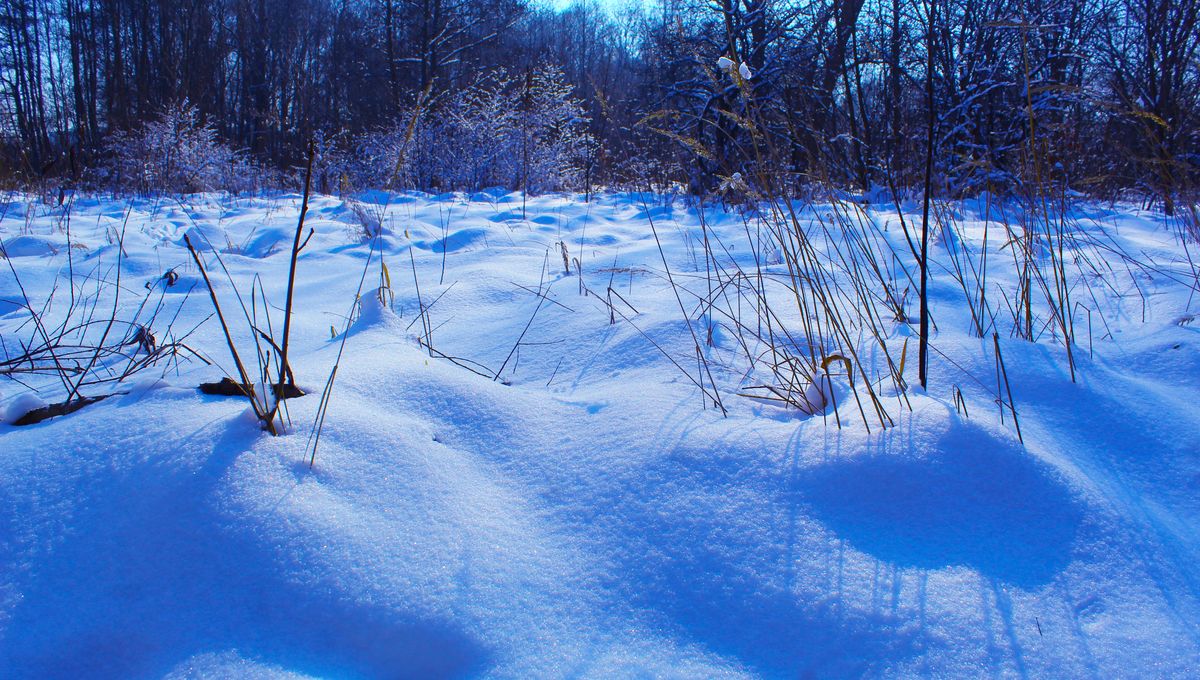
Snow is beautiful, but also powerful and destructive – and, if we’re honest, a bit confusing. For something made entirely of water, it can come in many forms: light and fluffy, sticky and heavy, shaped like a perfect snowflake, or falling in needle-like flecks. Its consistency changes a lot, but so does its color, which got us wondering: why does snow sometimes look blue?
To find out, we reached out to Dr Andrew Schwartz at the UC Berkeley Central Sierra Snow Lab in California. These researchers are no strangers to snow – and we were delighted to learn that yes, their research sometimes does involve just frolicking in the stuff.
What goes down at the Snow Lab?
AS: Some really good science, but also a lot of play out in fresh snow as well.
We do a lot of forecasting of incoming storms, but we’re also researching things like climate patterns and how those are shifting, and how we’re seeing more rain in the Sierra Nevada here in California as time progresses due to climate change.
One of the larger projects that I’m super excited about is the Sky To Stream Measurement System, which is now being finished. It’s one of the most comprehensive systems in the world for studying snowflakes, from the minute they fall out of the sky until they melt and go downhill in the water resources that we use.
How do you do that?
AS: We have a precipitation gauge to catch snowflakes as they’re falling out of the sky, and then we weigh them to see how much liquid water they contain. Then, as they fall in the snowpack, we’re constantly measuring what we call the energy balance, so how much sunlight is being absorbed to melt that, how much temperature is affecting the top layers of our snowpack, along with things like wind and soil temperature as well.
We’re constantly paying attention. We have soil moisture as well. So, if we get a little mid-winter melt period, we can see that soil moisture bump up. And then, of course, as spring comes and we get that melt really picking up, we see the stream flows shift, we are constantly measuring those as well. So, from the beginning to the end, at our site here in the Sierra, we’ve got some type of measurement of that snow.
Why does snow sometimes look blue?
AS: Snow appears blue, on occasion, for the same reason that we have blue water. After all, snow is just frozen water, right? So, as sunlight comes in and starts to penetrate the snowpack surface, we get a lot of absorption of the reds and the yellows of the light spectrum and the blue light is the only light that isn’t absorbed to a higher extent.
Generally speaking, if you have deeper snow and you’re able to kind of look underneath it, there’s going to be a darker, deeper blue, because you’re getting more of that blue come through as the yellow and red is being filtered out in different levels. But to the same extent, if you’re even just looking at a landscape with snow covering it, you do get more absorption of those reds and yellows, and so you get that blue look to it. It’s just water. Water is blue because it absorbs those wavelengths, and we see the same thing with our snow as well.
Any other cool snow facts?
AS: One of my favorite things is that the shape of a snowflake can tell you a lot about how cold it is in your atmosphere. If we have warmer temperatures that are closer to zero, then we’re getting those big, pretty dendrites that look like big stars, that’s what we call dendritic growth in our cloud zones, and those are generally indications of cold temperatures, but not super cold by comparison.
Occasionally in places where we get really low temperatures, -10°F to -25°F maybe we start to get things like needles, and they look like just sewing needles of snowflakes. That’s when we have this really intense ice development in the clouds, so that can tell you that we’re not getting that dendritic growth because there isn’t as much liquid water vapor in the air. Instead, it’s these little itty-bitty bits that freeze almost immediately and fall so they look like needles.
This article first appeared in Issue 29 December 2024 of our digital magazine CURIOUS as part of our We Have Questions column. Hungry for more CURIOUS questions? Head to the We Have Questions podcast for new episodes monthly.
Source Link: Why Does Snow Sometimes Look Blue?